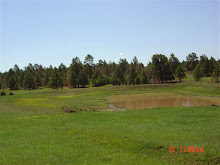Tests detect Barnett Shale emissions toxins in Dish residents' blood, urine
Here on the home front, we spend a lot of time concentrating on drilling's adverse impacts on water. I think this has drawn our attention away from all the other elements like air. You can survive without water for a few days, but not air. Lets not forget that our ability to live on earth means breathing (nontoxic please) air.
07:02 AM CDT on Wednesday, April 14, 2010
By PEGGY HEINKEL-WOLFE / Denton Record-Chronicle
pheinkel-wolfe@dentonrc.com
Tests on blood and urine samples taken from Dish residents by state health officials in January have found the same toxic compounds in people's bodies that have been detected in the air and water here.
The results showed that exposure is occurring, according to Louisiana chemist Wilma Subra.
"Clearly, it's connecting the dots – which we didn't want to happen," Subra said.
Subra, the recipient of a 1999 MacArthur Fellowship ("genius" grant) for her work as an environmental health scientist, has been working with the community since Dish spent $15,000 last year to commission a study of the western Denton County town's air quality.
Eleven gas gathering pipelines converge in southern Dish, where five energy companies run major compression and metering facilities in a side-by-side complex of plants on Strader Road.
Allison Lowery, Texas Department of State Health Services spokeswoman, confirmed that the department sent results last week to all 28 residents who were tested, far fewer than the 50 people the agency originally planned to choose at random for testing.
In addition, the department will release a summary report, since individual results are considered confidential. The aggregate report is being drafted now and should be released the last week of April or the first week of May, Lowery said.
Angry at explanation
Resident Amber Smith said she was troubled that it took so long to get the individual results. When investigators came to take a water sample along with blood and urine samples in January, she was told it would take four to six weeks to get results.
As she read the April 2 cover letter that came with her results, she said the words seemed carefully crafted.
She was angered, however, at how the letter suggested she had been exposed to the solvent N,N-dimethylformamide through "the production of electronic components, pharmaceutical products, textile coatings, and synthetic fibers."
"I'm around none of that," Smith said. "They found the same compounds in all my neighbors, but in trying to explain that, they failed to associate that it could be the drilling. They never once did even mention that in their explanation."
Mayor Calvin Tillman said he was reassured at first when he received his results, since the levels detected in his blood did not exceed any average values for the general population.
But no such baseline comparison exists for urine, where toxic compounds show up as metabolites in the body. And, after Smith and Tillman compared their individual results with several other residents, they became more concerned.
The same toxic compounds found in their own blood and urine tests were detected in other residents. Tillman said he asked Subra to make some comparisons. More>>>






0 comments:
Post a Comment